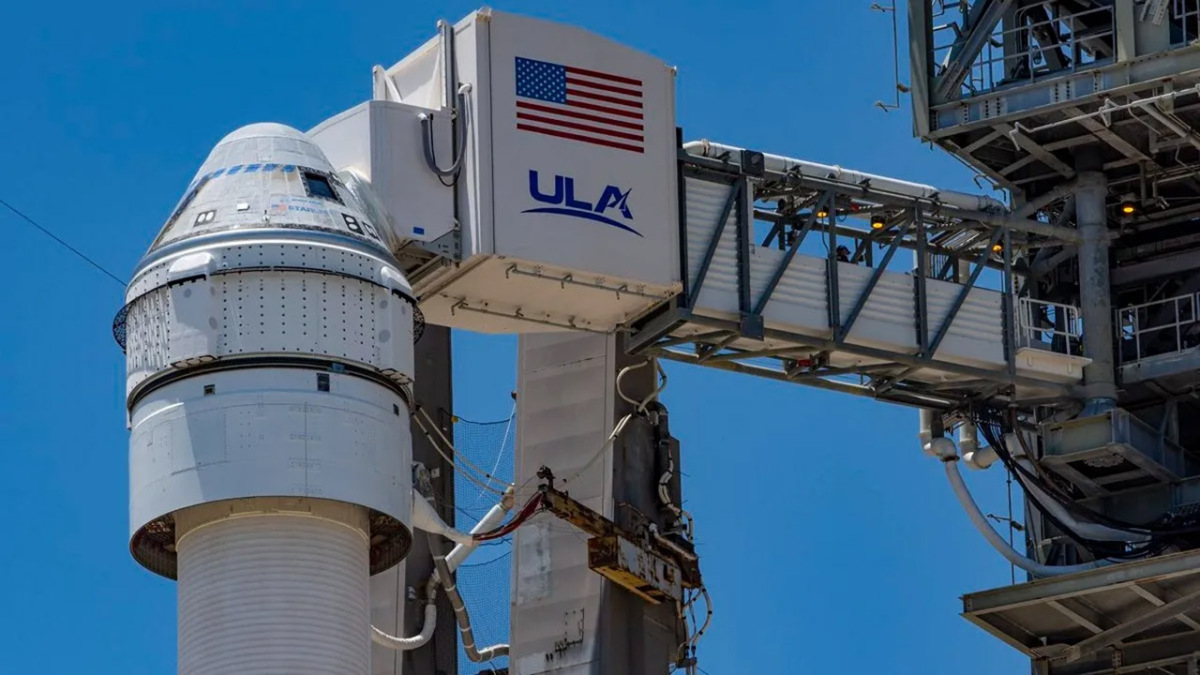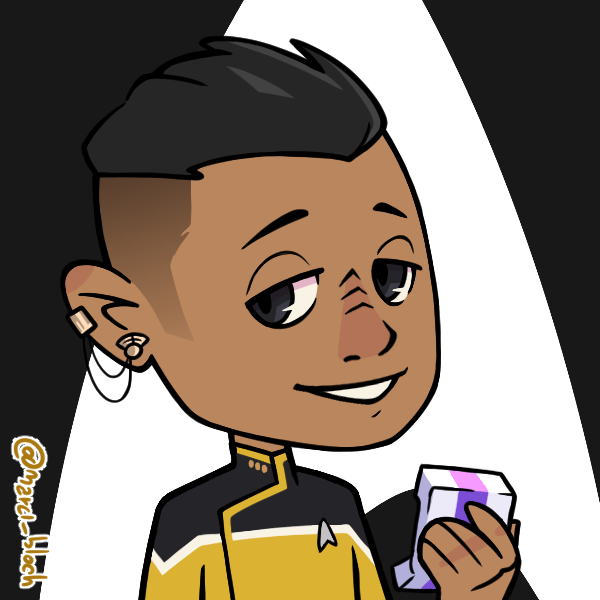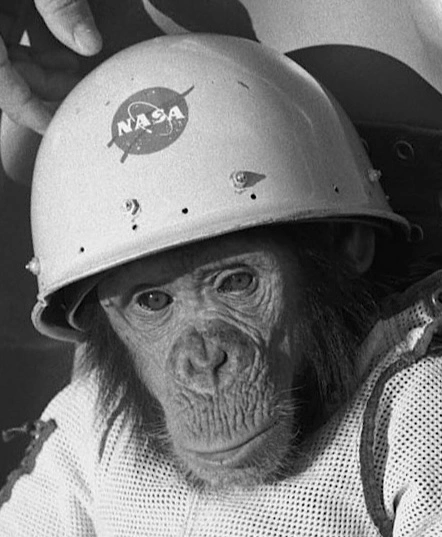Boeing and NASA are moving ahead with the upcoming Starliner demonstration launch despite an active helium leak. The launch is now on the books for Saturday, June 1, at 12:25 p.m. EDT. If all goes as planned, Starliner will rendezvous with the International Space Station the following day and return to Earth on June 10. If not, it will be another embarrassing setback for Boeing’s troubled spacecraft.
Technicians discovered helium escaping from the fuel system earlier this month after valve issues caused NASA to halt the last launch attempt. NASA said in a recent news conference that the extremely slow leak does not pose a danger to the spacecraft. This is based on an exhaustive inspection of Starliner, which was removed from the launchpad along with the Atlas V so the valve in ULA’s rocket could be swapped. It was then that the team noticed the helium leak in Starliner.
Even though the optics of launching with an active leak aren’t ideal for the troubled Boeing craft, NASA says engineers have done their due diligence during this multi-week pause. Every space launch has risk tolerances, and NASA has judged this one to be in bounds. Helium is a tiny atom that is difficult to fully contain—even the highly successful SpaceX Dragon has occasionally flown with small leaks. While helium is part of the propulsion system, this inert gas is not used as fuel. Helium is used to pressurize the system and ensure fuel is available to the spacecraft’s four “doghouse” thruster assemblies and the launch abort engines.
Sounds pretty on-brand.
“We fly with worse problems all the time.”. NASA: "Oh ok, you’re clear to launch. "
Given the ballooning costs of the program, a helium leak is fitting.
Sigh…
👏
I hate that the joke hits, just as the shit does the fan at Boeing.
Careful… that kind of talk could lead to your very convenient “suicide”…
Have they considered submerging the spacecraft, to see where the bubbles come out? 🙃
The last guy who submerged Boeing parts didn’t end up too well.
I don’t trust Boeing with airplanes anymore. What makes you think I trust them with spacecraft of any kind?
Because this isn’t launching from a Boeing factory. NASA goes over it with a fine tooth comb first.
I trust NASA but despite that I still don’t trust that it was Boeing who were involved.
I trust NASA
They’ve killed 21 astronauts so far (not counting X-15 pilots), most of them through criminal negligence…
As opposed to any other companies? I don’t have the data, but I have a hunch that if you can find every OSHA violation that ended up in death, NASA would be pretty low on that list. Even if you factor in the hours worked.
None of us are sitting in it’d cock pit. Anyway, how many pits does a cock have anyway?
Removed by mod
I would say two. Right under the wings.
What about front and back of the balls,?
Those are ballpits, not cockpits
Okay… moving on.
Mission Control : “You are clear to launch.”
Astronaut (in comically high pitched voice) : “Um, are you sure the leak is contained?”
Mission Control (stifling giggles): “Oh for sure.”
At that precise moment the door to the astronauts cockpit falls off onto the launch pad.
Boeing logo prominently displayed
Boing: Fuck it! We’ll do it live!
Boeing just doesn’t know what that is. They’ve never seen a leak. What does that even mean “to vent us out?”
I distinctly remember growing up hearing there’s not even a .01% margin for error on spacecraft. That they must be so durable to withstand the conditions of leaving/reentry and the shuddering vibrations. I realize it’s different, but the big fear is always having another Challenger. Challenger didn’t just break up, it exploded into 2 pieces on national television. " teacher going to space" had a TV in every classroom across the country watching it.
Helium seems used in the modern rocket to keep hot gas pipes separate from cold liquid fuel. 3 minutes before launch the system is charged and maintained by ground, just before ignition it’s disengaged and the system has to support itself. The helium on board only needs to stay pressurized for the 7 minutes or so it takes before the thrusters are spent, and purged, and that’s why they don’t view it as an issue. But still sounds like fuckass Boeing being ok gambling with lives while NASA shrugs - again.
Removed by mod
“First woman in space will be a teacher”
Valentina Tereshkova was the first woman in space, orbiting the Earth in a Soviet capsule in 1963.
Sally Ride was the first American woman in space, as a part of STS-7 in 1983.
The Challenger Disaster took place during STS-51-L in 1986.
Christa McAuliffe, who was chosen as part of NASA’s Teacher in Space Project, was never a nominee for any “first woman in space” acknowledgements.
Didn’t mean to be so incorrect (off by 23 years) there was some kind of accolade for her, maybe it was just being a teacher? I’ll fix the post tho
First civilian
In 1984, President Ronald Reagan announced the Teacher in Space Project, and McAuliffe learned about NASA’s efforts to find their first civilian, an educator, to fly into space.[20] NASA wanted to find an “ordinary person,” a gifted teacher who could communicate with students while in orbit.[6][15] McAuliffe became one of more than 11,000 applicants.[ https://en.wikipedia.org/wiki/Christa_McAuliffe
Removed by mod
Launch was cancelled minutes before go.
They really should make the Boeing executives be the first astronauts on this mission.
Nah, you have to have actual skills to be an astronaut.
They’ve launched dogs, monkeys, and whatnot before.
Sure, those were still way more skilled than Boeing executives, but there’s also uncrewed launches, so that’s no excuse.
Call them payload or cargo or ballast instead of astronauts if you want, what counts is launching the fuckers into space and (hopefully) not bringing them back.
Morton Thiokol has entered the chat
Morton Thiokol
you mean Allan McDonald?
Interestingly enough:
The focus of the commission’s investigation shifted to the booster rocket O-rings, and the concerns and efforts of McDonald and his engineers to stop the launch which were ignored by NASA officials. McDonald’s comments to the commission led to him temporarily losing his position with Morton Thiokol, being demoted.
The presidential commission was alarmed at Morton Thiokol’s decision to punish McDonald and introduced a joint resolution that threatened to prevent Morton Thiokol from receiving further contracts from NASA. Given the commission’s threat, Morton Thiokol promoted McDonald to vice president and tasked him with improving the rocket joints that failed during Challenger’s launch.
Perhaps the U.S. govt needs to step in again to right the ship at boeing. Well, I’m being coy, of course the U.S. gov’t has to step up and do something. Companies should never be some sacred cow that we’re afraid of upsetting.













